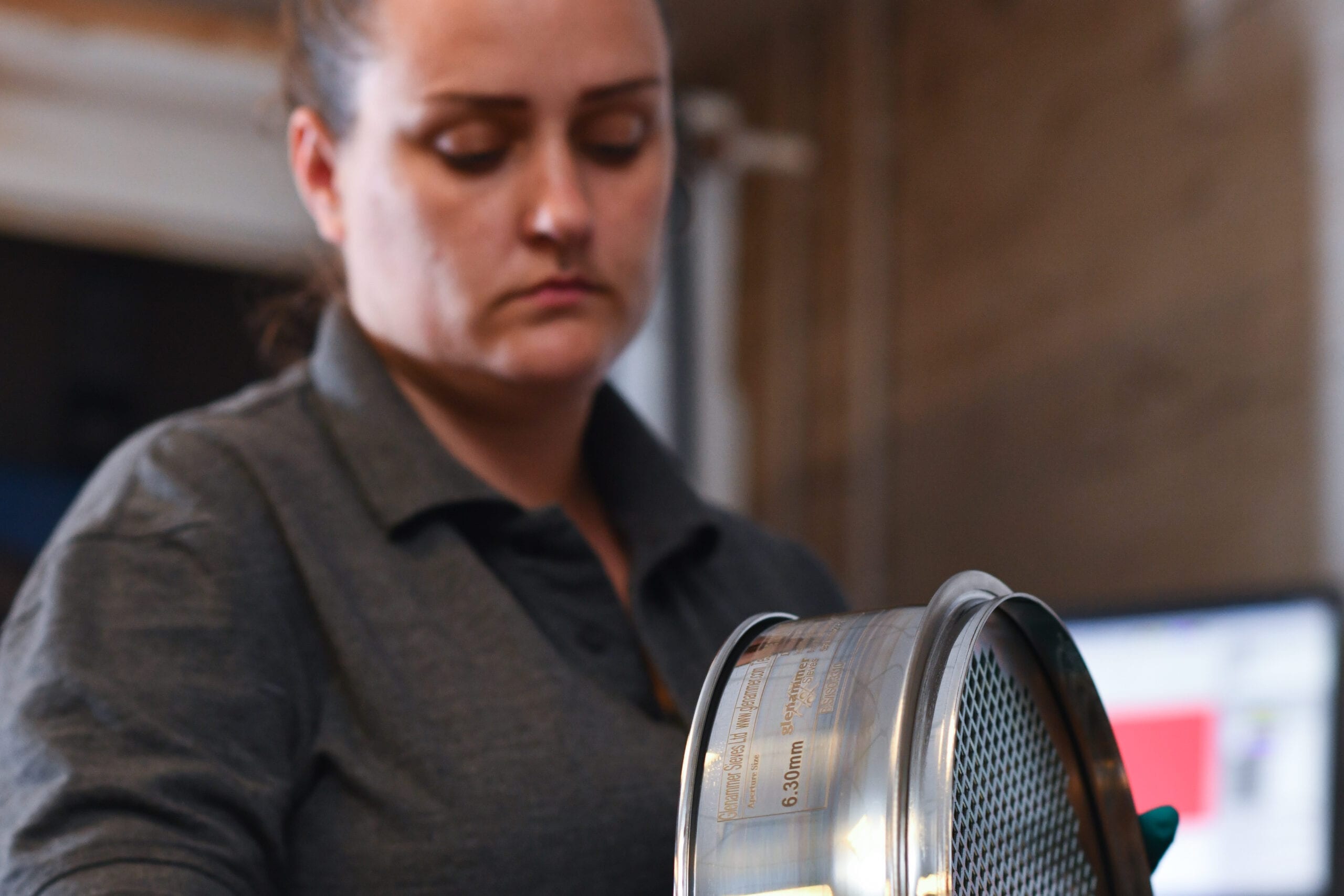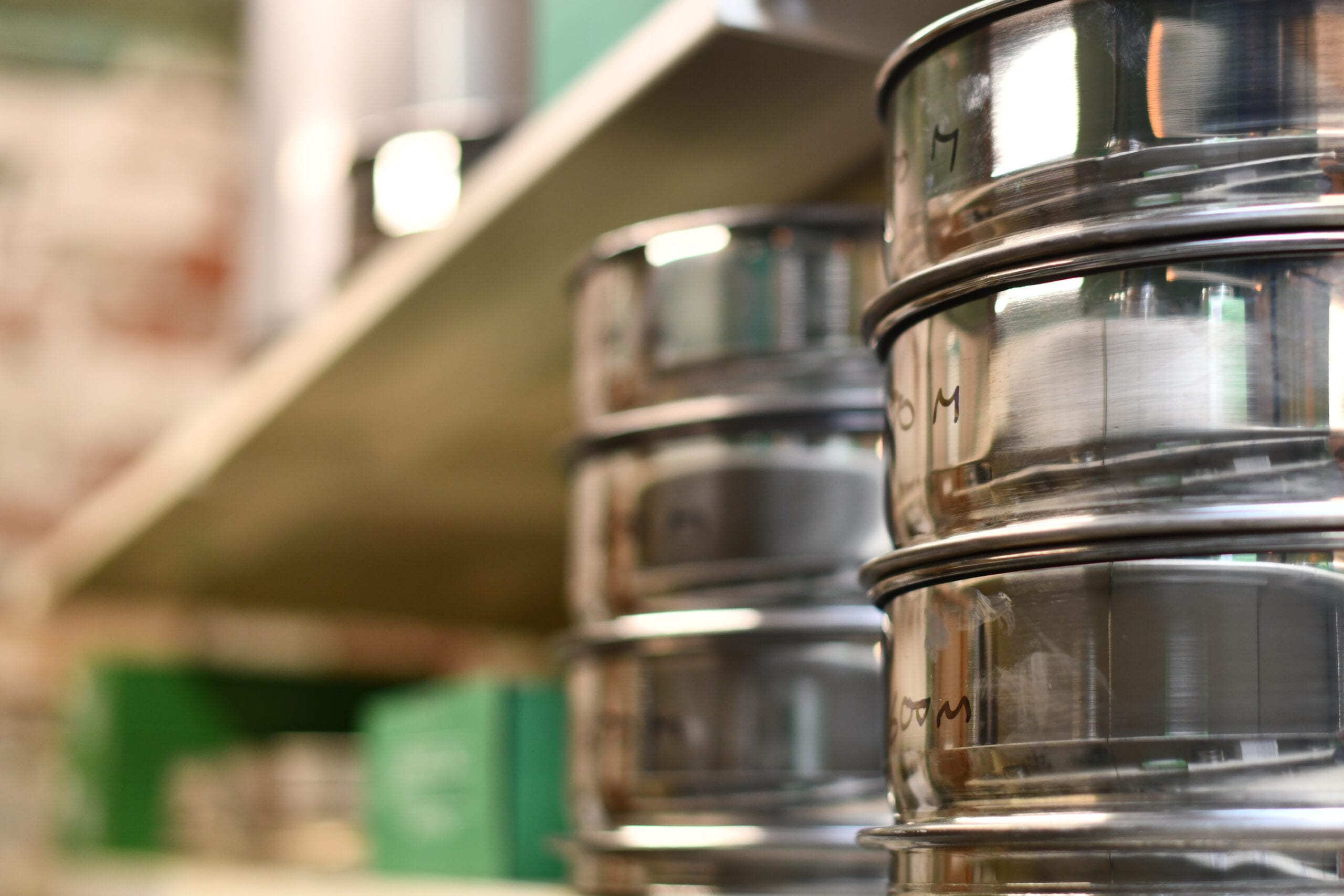Regular care and maintenance
Like other laboratory test equipment, test sieves require regular care to maintain the performance standard.
Clean between sieving
Between uses, we would recommend that a nylon bristle paint brush is used to clean the mesh with a gentle circular motion from the underside. Excessive brushing can also damage the mesh, so brushing should be avoided especially on sieve mesh finer than 150 microns (NO.100).
Protect sieve from receiving damage
It is important to use the correct aperture size test sieves accordingly. When users need to utilize sieve shakers to conduct the experiments, we would recommend using larger aperture size sieves stacked above the finer ones, reducing damage to the finer mesh.

When the particles are lodged in the mesh, brushes or sharp objects can cause damage affecting the result obtained from the test sieves. Ultrasonic cleaning is the best method to remove the particles trapped in the mesh. The sieves should be immersed into the ultrasonic cleaning bath and then must be dried thoroughly before reuse. The Ultrasonic cleaning should be done on a regular basis after testing.

With proper cleaning and care, test sieves should provide many years of consistent service. However, users should consider replacing the sieves if they show any of the following signs:
Sieve mesh becomes loose
Sieve mesh is damaged
Cannot pass calibration check
Glenammer test sieves are designed to be easy to clean and offer a simple maintenance solution. At Glenammer, our production team reinforce any test sieves that is under 90 microns (No.170), by attaching a larger aperture as a stronger backing mesh to support the fine mesh and to protect the mesh from being damaged.
On any Glenammer test sieve under 90 microns (No.170), the edge between mesh surface and frame will be filled to prevent particles getting stuck. Each Glenammer test sievecomes with a laser marked label on the highly polished frame, so there are no rivets used for labelling. This also makes users cleaning much easier.
Please fill out our contact form below to stay in touch. By using this form you are opting in to our newsletters.